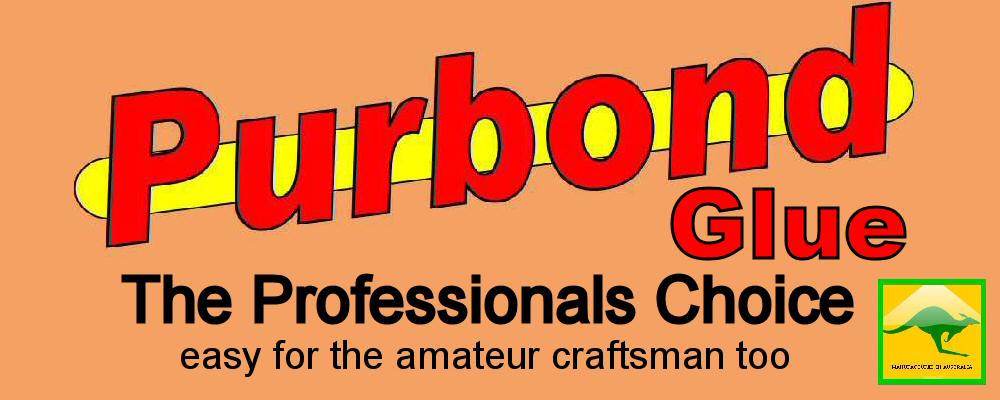High performance PUR Adhesive
Call us on 1300148442

Gluing Timber, detailed
instructions for best results.
In
order to use the glue, to obtain the very best results wood pieces
should:
• Have a similar moisture
content.
• Have a similar structure,
density and mechanical behavior
• Be prepared at the same time
• Joints where these
requirements cannot be met should still work very well.
To
prepare surfaces for gluing, make sure they are:
• Straight and even to obtain
close contact between the work pieces
• Not “compressed” by machining
(looks shiny)
• Able to absorb glue
• Free of oil, dust and other
impurities
• Freshly prepared to limit
oxidization of the natural resin/oil content of the wood
• Cross grain sanding is better
than planning
• Don't use
stearated sandpapers (white, grey or violet). They
will contaminate the surface.
Moisture of
Content of wood varies:
• Most kiln-dried wood is 8 to
12%
• On the east coast of
• The glue reaction in the glue
line will accept moisture content in the range of 10 to 20 %
• When gluing open grain wood,
wood with up to 25% moisture content may be acceptable
For wood
with low moisture content (less than 10%), you must:
• Spray or wipe water onto the
surface to be glued without soaking the wood
• Leave time for the moisture to
distribute before applying the glue
• Apply glue soon after
dampening an open grained wood
• Sand the moistened surface
lightly before applying glue on closed grain wood or high-density wood
types in order to remove any oil/ resin emulsion and to create a larger
gluable surface
• Leave some time after
dampening a closed grain wood or high-density wood types to allow
surplus water to evaporate
• Be careful, because by adding
water, the open time may be reduced quite a bit
• Remember: moisture does not
speed up the final curing process but allows for a chemical reaction to
take place
Clamping
pressure:
• Varies according to wood
structure and density, and may vary from job to job and from wood type
to wood type. Clamp hard.
• Is usually 1 kg/cm2 to 7
kg/cm2 for softwoods. ( 100 kPa to 700 kPa) ( 14 psi to
100 psi ).
• Is usually 5 kg/cm2 to 15
kg/cm2 for hardwoods ( 500 kPa to 1.5 MPa ) ( 70 psi to 200 psi )
• Clamping pressure should
always be adjusted to secure close contact, and always be sufficient to
secure minimum or no foam buildup in the glue line
• Clamping pressure must be
distributed evenly over the glue line area
• Generally, clamping time has
expired when the foam pressed out from the glue line feels dry and
somewhat crisp
• Foam in a glue line has no
structural strength whatsoever, and must not be considered as a gap
filler
• Vacuum bagging ( 15psi 100kPa
) works well with most softwoods, test first with hardwoods.
Joint Design.
• Joint design is
always important, joints in compression and shear are stronger than a
joint in tension. A joint in peel is the most challenging for a glue. A
joint in peel with a narrow start point could fail due to overload of
the glue at the peel start point. End grain gluing does work quite
well, but the strength of the timber can be an issue. In high
performance situations, please ask us for guidance.
